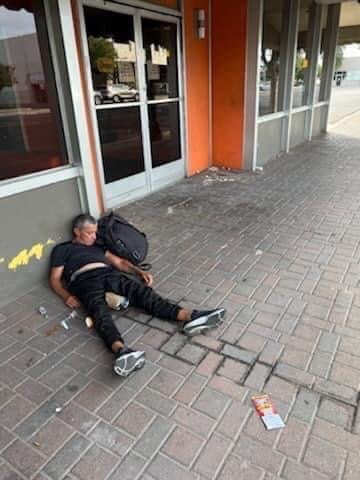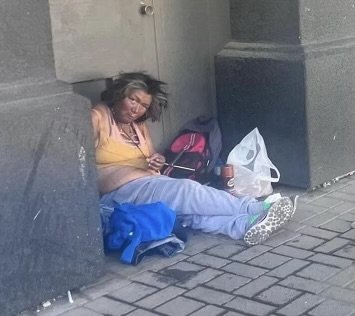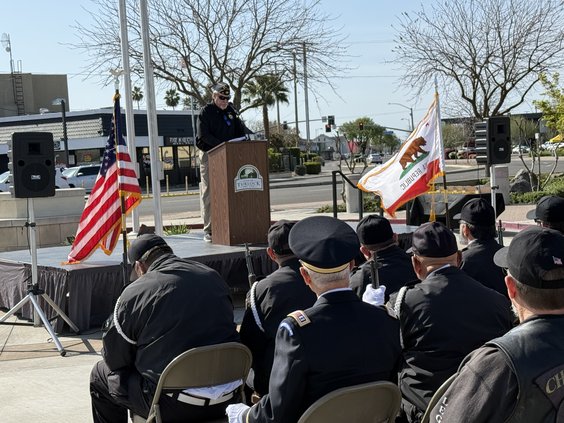In 2019, Legacy Health Endowment, a local non-profit health organization, commissioned a 24-page report on the subject of homelessness within the city of Turlock.
Though LHE viewed the subject mainly through a health care lens, the report concluded that while Turlock may not have a homeless “crisis” … it does, indeed, have a homeless problem.
Three years after the LHE report, the problem persists. Seemingly, the problem now is concentrated in downtown Turlock, which, in turn, has created problems for business owners.
The dominoes have fallen.
“I think it’s crazy that we’re 12th in the nation, per capita, in homelessness,” said Main Street Antiques co-owner Jennifer Jensen, referring to a recent USAbytheNumbers.com report. “Sadly, it’s just part of doing business downtown."

Earlier this summer, a group of frustrated business owners collected photographs of homeless people sleeping on the downtown sidewalks, in doorways and behind Dumpsters.
The photos were then posted on Facebook.
“Yeah, we were, basically, trying to shame the city,” said Jennifer Roots Sousa, owner of Rustic Roots on Main Street. “But I feel like I’m a compassionate person. I’ve gone out of my way to help many of the homeless people I’ve encountered. But at the end of the day, I’m a business owner. And it has an impact on my business.”
Ken Kelleher, like Roots Sousa, also sympathizes with the plight of the homeless. But his establishment, the Finesse Gallery on Center Street, abuts an alley where the homeless tend to congregate.

Kelleher purchased a shovel that he uses exclusively to clean up excrement in his alley.
“And if I leave the shovel outside, it’s stolen within 10 minutes,” said Kelleher.
According to the Stanislaus County point-in-time (PIT) count — essentially, a census of homeless persons — conducted in February, the number of homeless in Turlock has actually decreased since 2021.
Roots-Sousa, Kelleher and Jensen, aren’t buying it. And they may be on to something.
Though Turlock’s overall homeless number fell by 10 percent this year, the county pointed out that several factors contributed to fewer homeless being counted. Among them were:
· Different data-collection methods — Because of the pandemic, there was not a full bevy of volunteers fanning out across the county.
· Weather factors — Fewer homeless were outside, and available to be counted, due to temperatures below 35 degrees.
· Fewer volunteers — The traditional late-January count was postponed until February and that posed challenges for volunteers who had to attending mandatory training sessions. About 300 signed up to volunteer, but less than 200 actually participated in the February count.
· Homeless encampment sweeps — Prior to the PIT count, there were several homeless encampment sweeps in Stanislaus County that were dismantled by law enforcement. As a result, outreach and engagement teams were unable to locate homeless individuals in their usual spaces.
According to the PIT count, Turlock has 211 homeless persons, roughly one in every 350 residents. The rate is better than California’s overall rate — 1 in every 240 — but far worse than the national average of 1 in 600. Turlock’s rate is also superior to that of Modesto (a city three times the size of Turlock), where 1 in 150 residents are homeless. But Turlock falls short of neighbors Keyes, Ceres, Hughson, Oakdale, Patterson, Riverbank and Waterford. With a combined population of just over 140,000, those communities have a homeless rate of about 1 in 1,100 residents.

Turlock Police Chief Jason Hedden thinks there’s a more logical explanation.
Before the homeless encampment sweeps, homeless people tended to congregate in a single, remote area, giving downtown the patina of a district mostly unaffected by homelessness. After the sweeps, the homeless left their base and spread through the city like dandelion spores on the wind. Since then, the homeless population has become more visible and led to a common refrain: “It’s getting worse.”
Hedden gets it.
“It is the biggest challenge for us,” said Hedden, who stops at city parks daily on his way to work to interact and make inroads with the homeless population. “And it’s the biggest source of frustration for us.
“But nobody’s concerns are falling on deaf ears.”
In 2012 the U.S. Department of Housing and Urban Development (HUD) broke down homelessness into four separate categories: living in a place not meant for human habitation, in an emergency shelter, or in transitional housing; the loss of primary nighttime residence; families with children who are unstably housed; and those fleeing domestic violence.
In other words, homelessness can take on myriad forms.
Some homeless people have jobs, but no dwelling in which to live. Others, might not have a house, but do have a car in which they live, driving from parking spot to parking spot, hoping to avoid detection. Most, however, have more visible demons, such as addiction or mental health issues. These victims often are seen wandering the streets, muttering to nobody in particular.
But whether it’s drugs, alcohol, mental health issues, familial discord, financial hardship, or just bad luck, the fact remains: Turlock, like most every other city in this country, has a problem.
Editor’s note: In the coming weeks, the Turlock Journal will publish more stories examining this issue of homelessness. We will have deeper conversations with business owners, law enforcement officials, elected representatives, non-profit organizations, and the homeless themselves. We promise no solutions, only to shed light on a problem that can only be addressed by facing it from diverse viewpoints.









